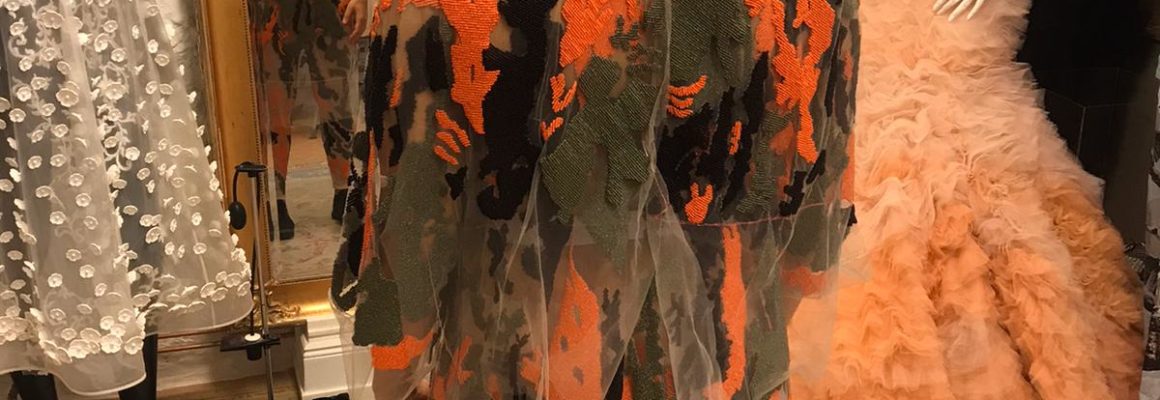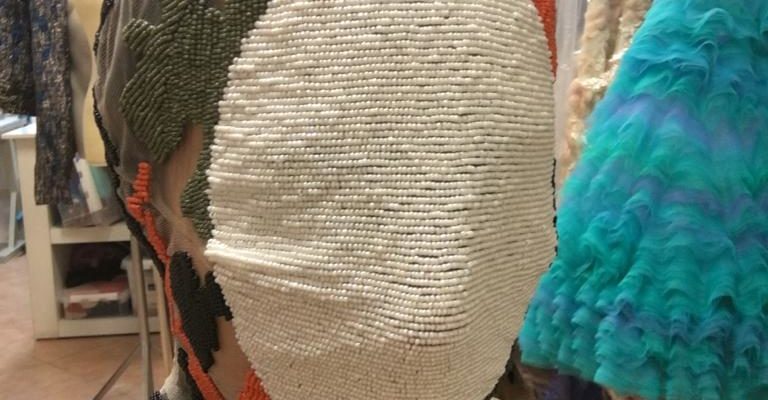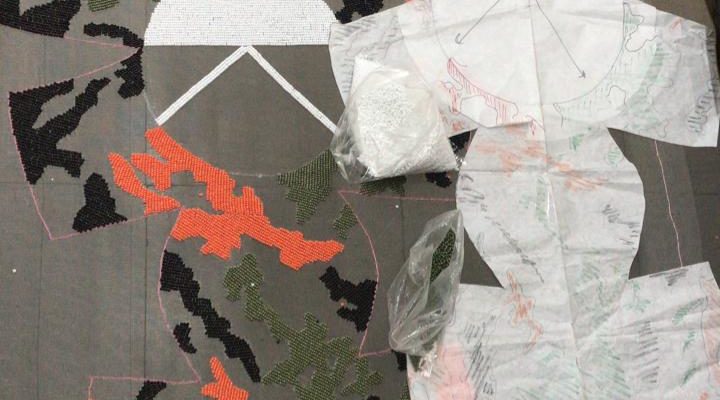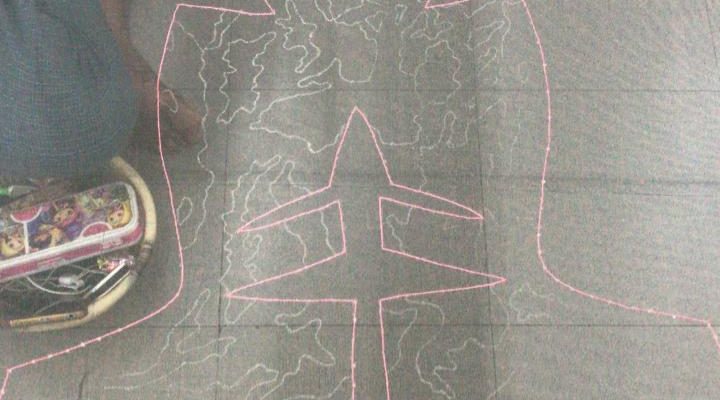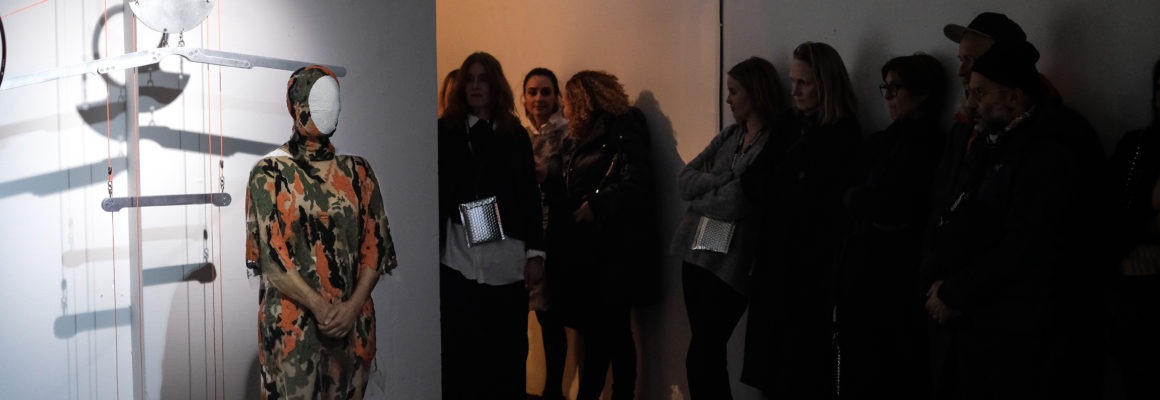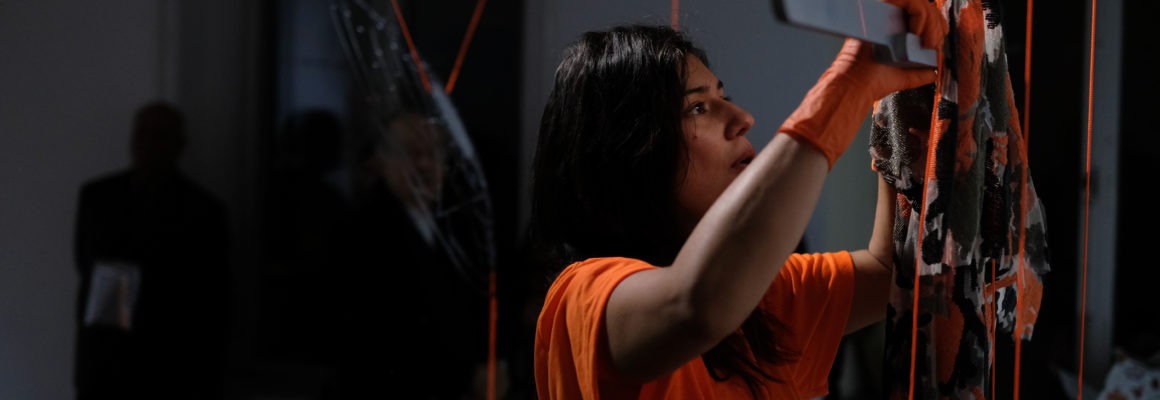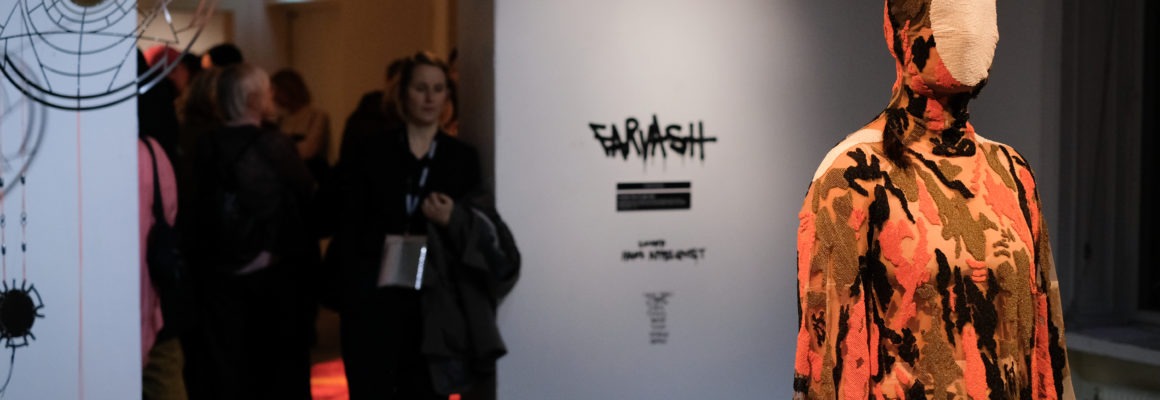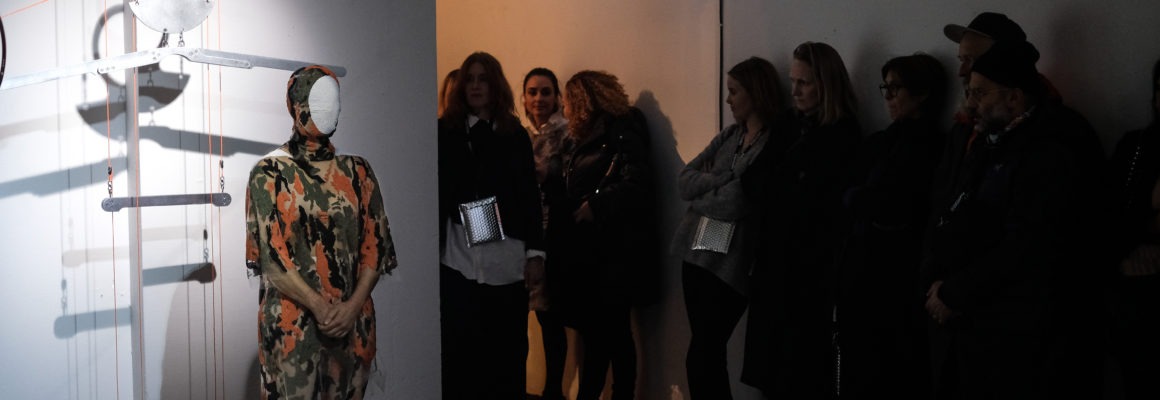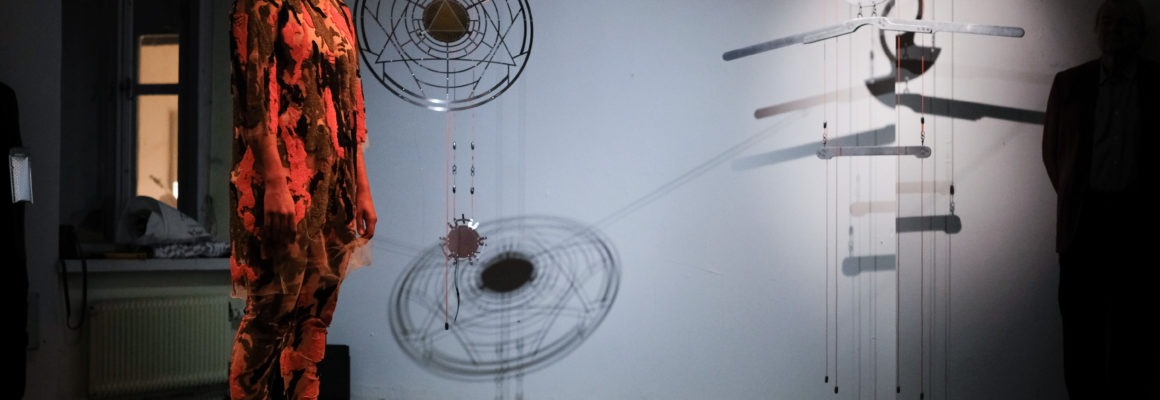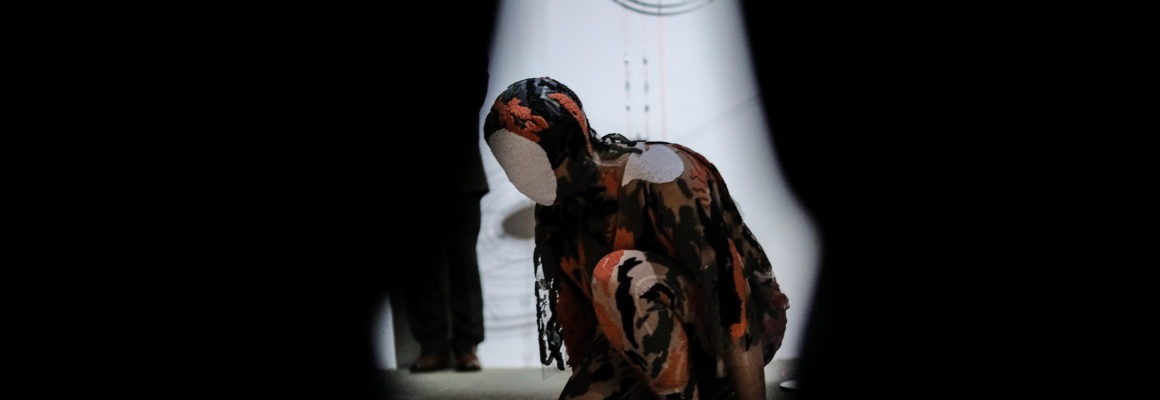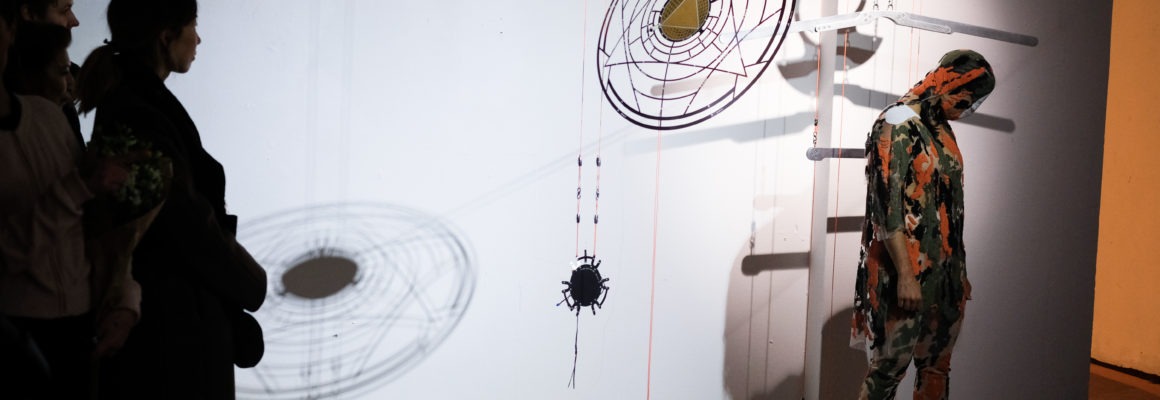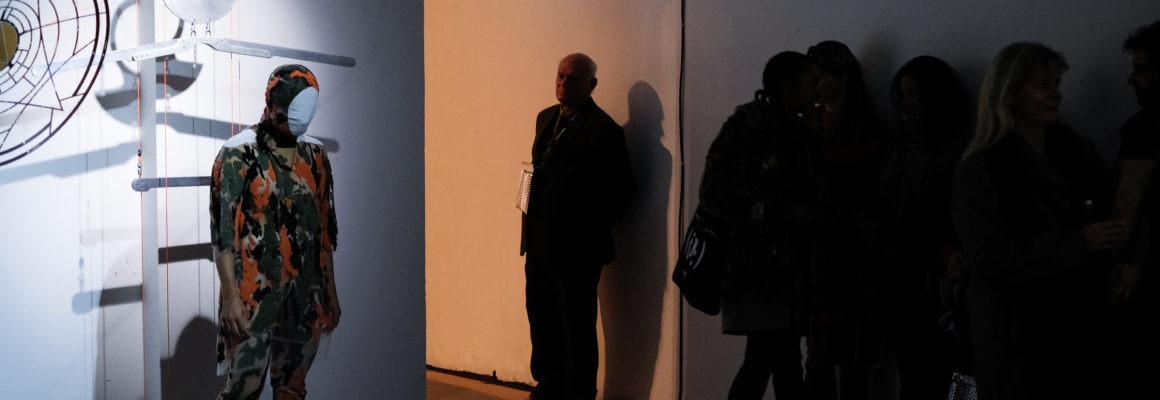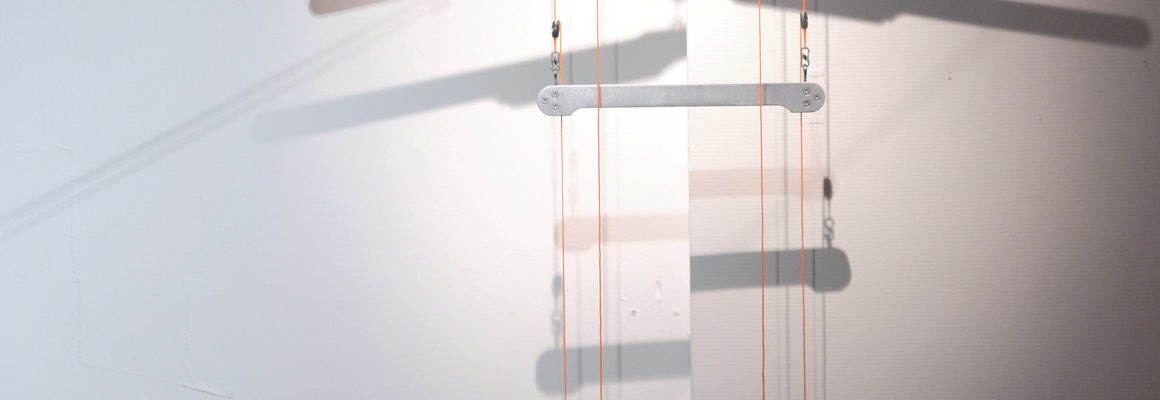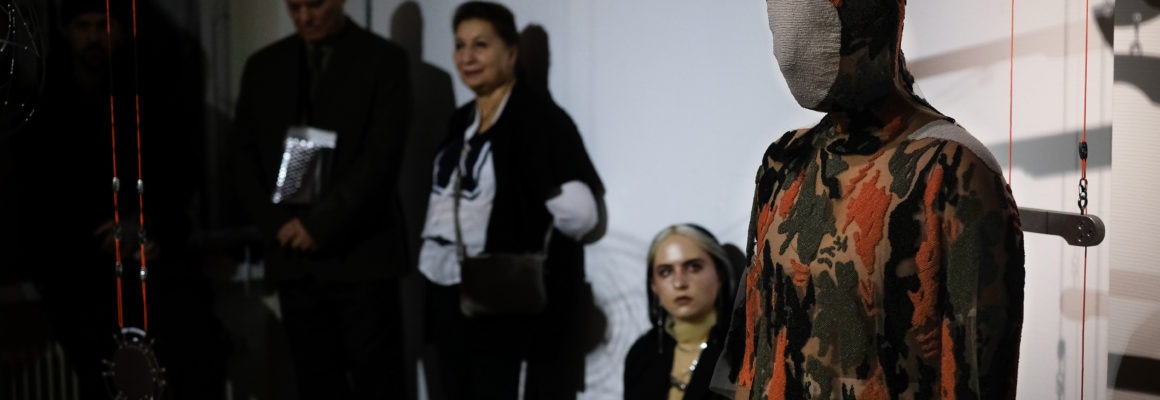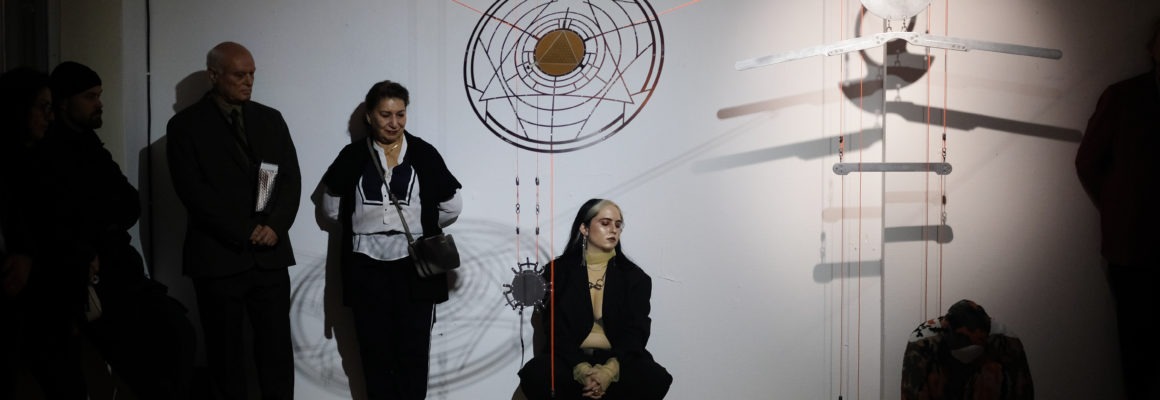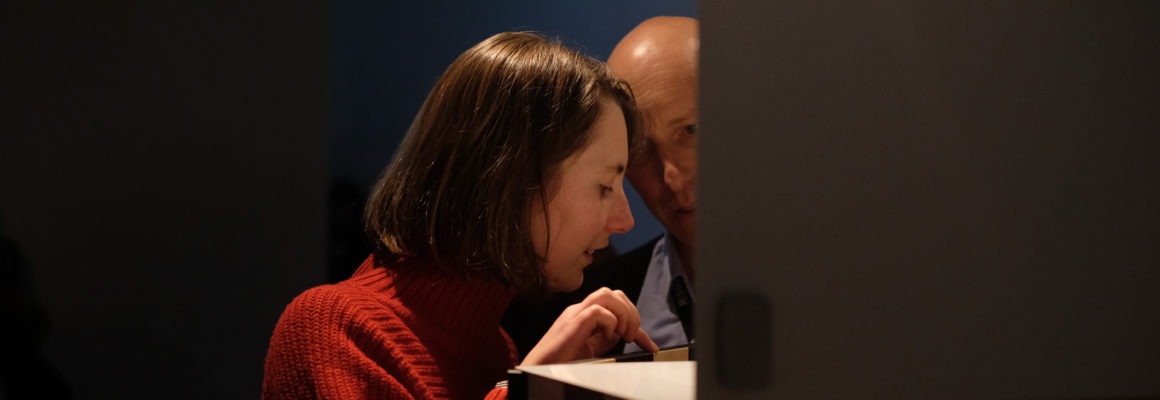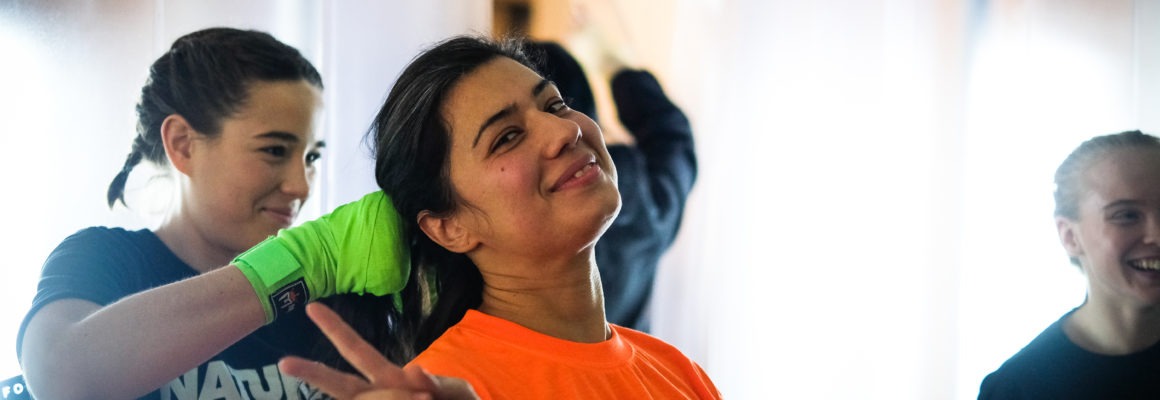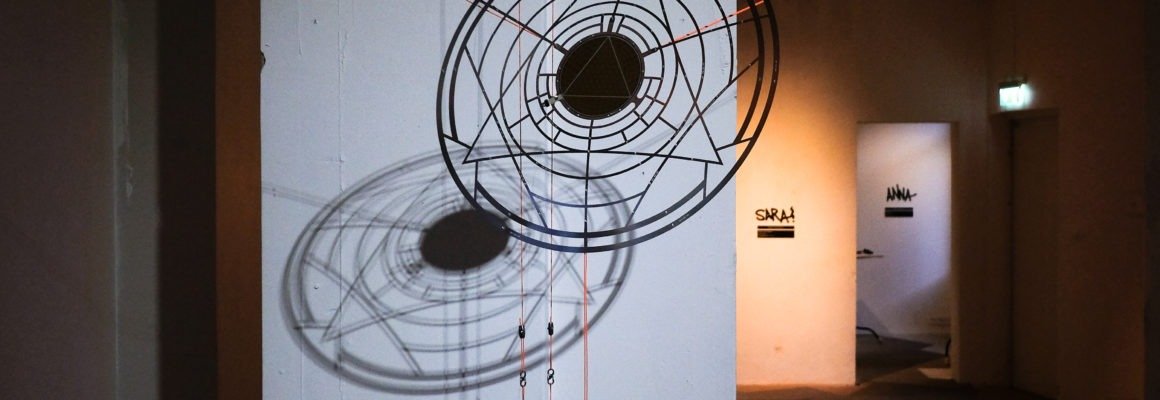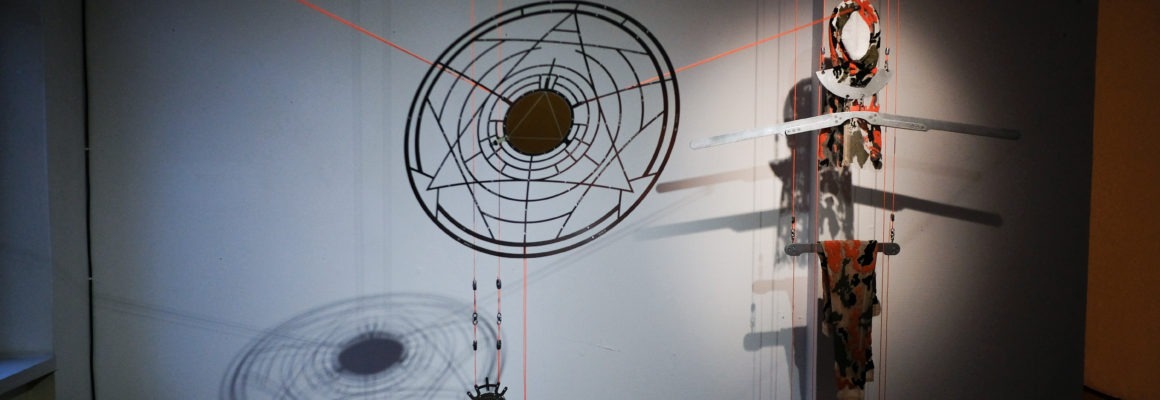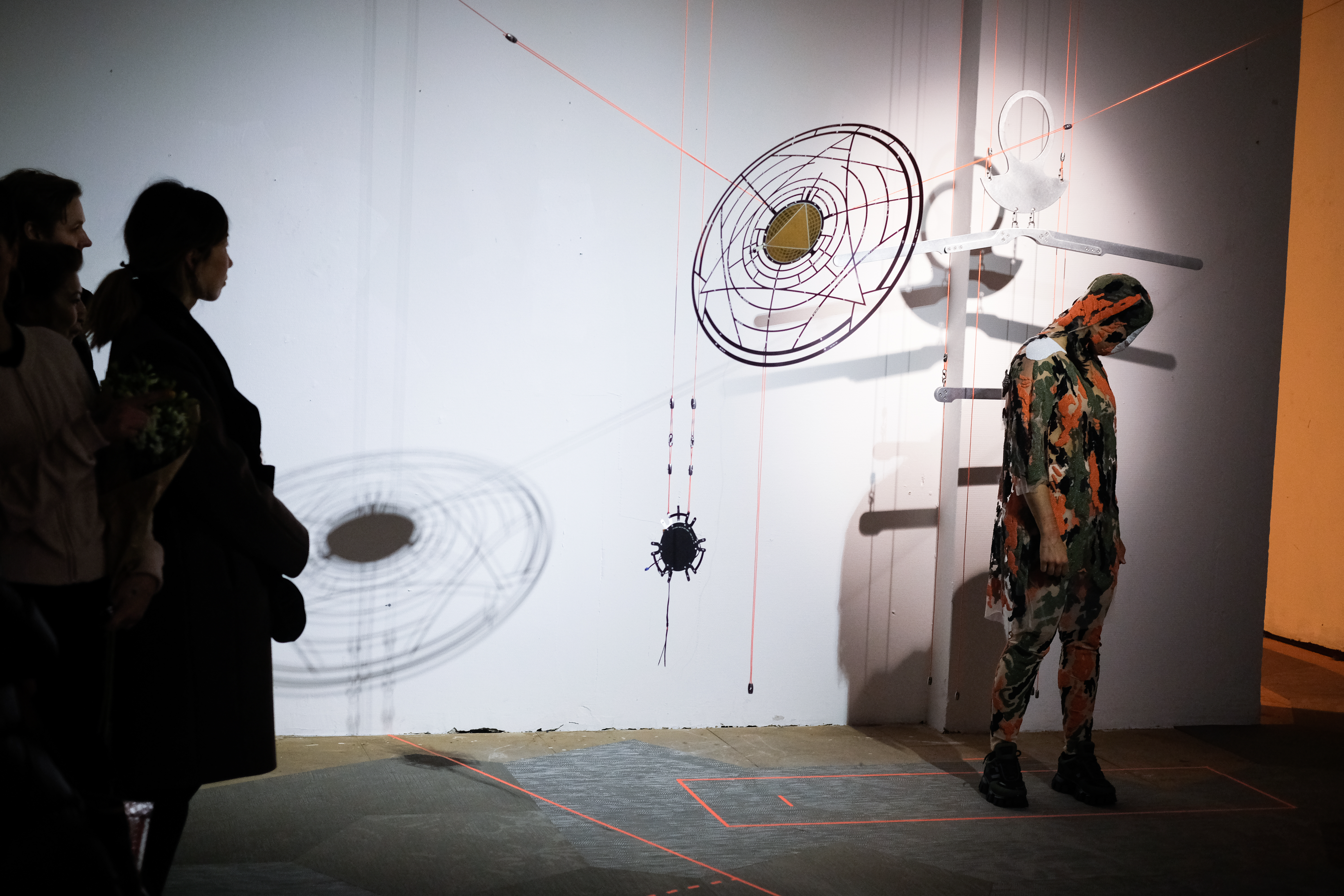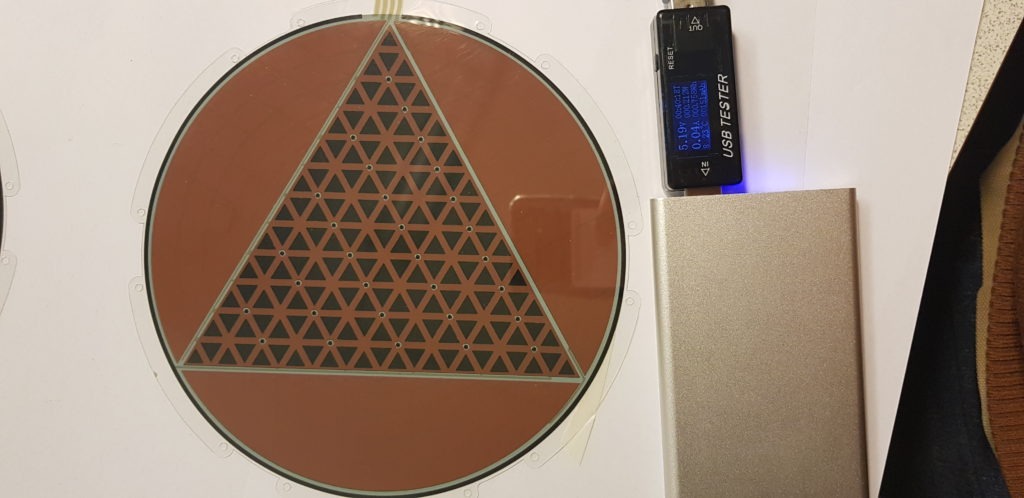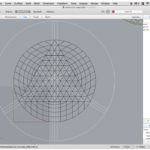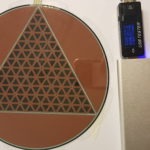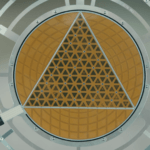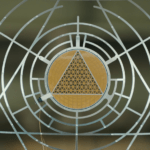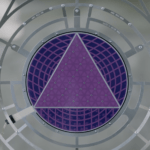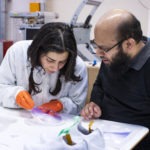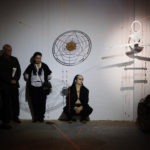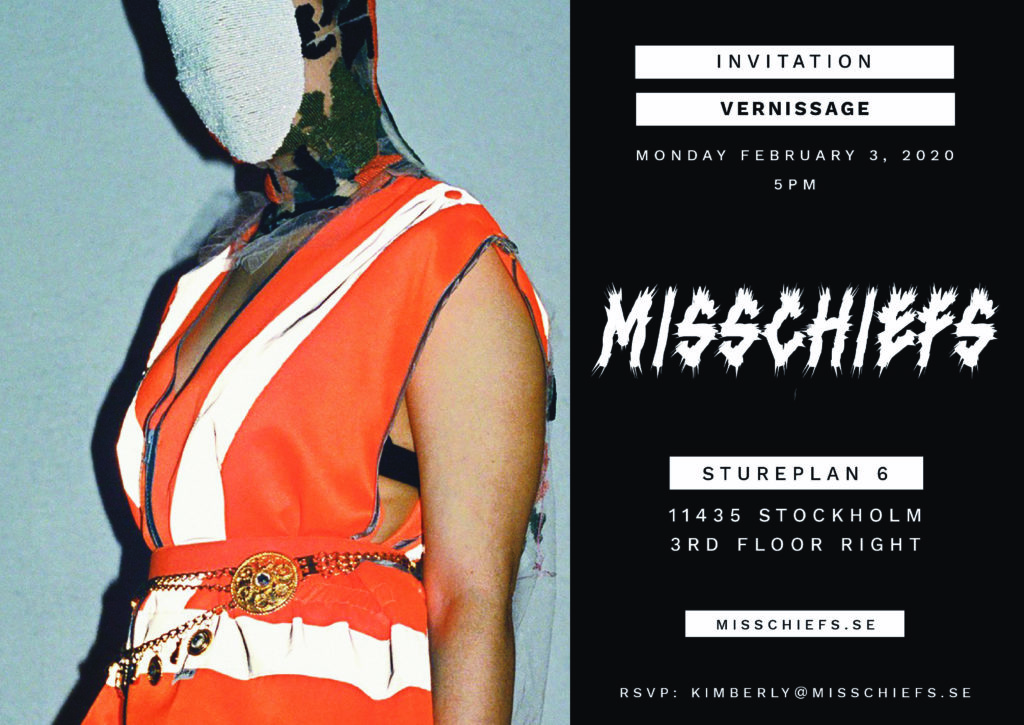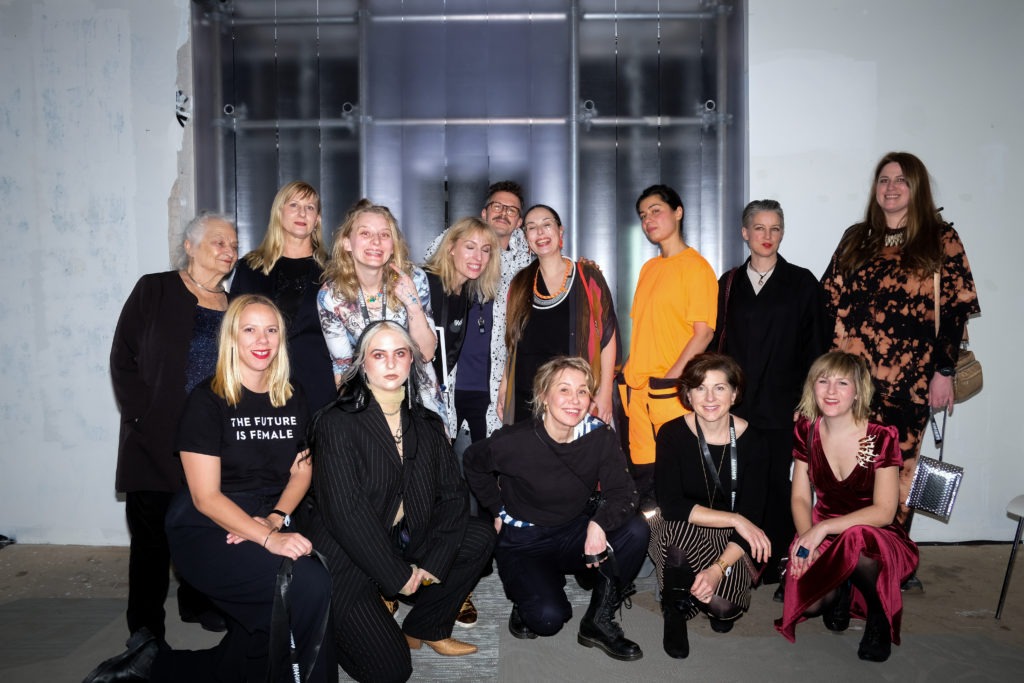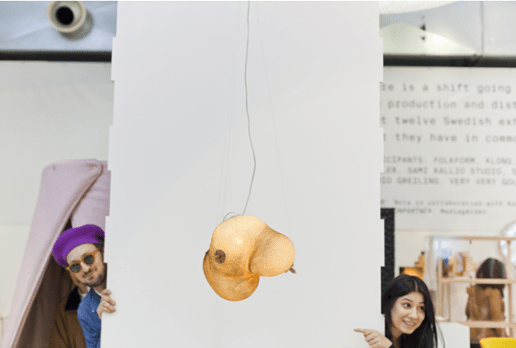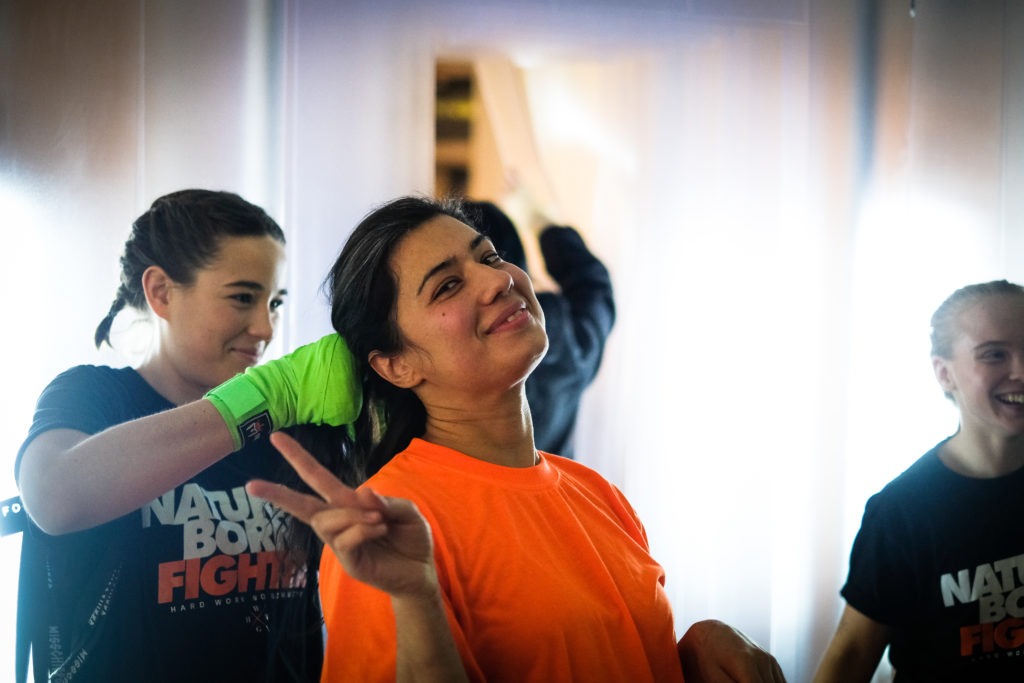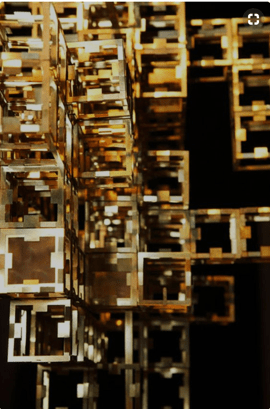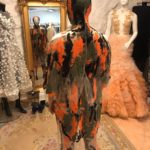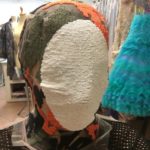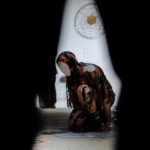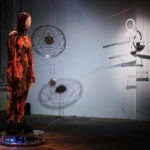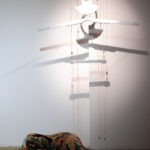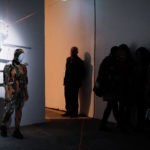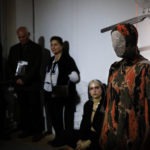The team at PEA and RISE Printed Electronics are proud to explore the outer boundaries of technology, collaborating with innovators, entrepreneurs and artists. During the winter 2019/20, a collaboration with artist Farvash Razavi lead to a funky, techy and beautiful electrochromic creation.
As a part of the performance an electrochromic device was used, accentuating the futuristic and ominous atmosphere. The device used a multitude of segments and drive protocols, designed, prototyped and manufactured at the Printed Electronics Arena. It is one of the most sophisticated designs using electrochromics to date. The device was built using components as stainless steel, 24k gold, Pedot:PSS, Electrolyte, Pigment, Dielectric, Carbon and Silver. Drive protocols and control was designed by Yusuf Mulla and the printing made by the printing team at PEA, in particular Jessica Åhlin, Marie Nilsson and Kathrin Hübscher.
- Electrochromic displays with multiple segments and drive circuits
Misschiefs is a groundbreaking feminist exhibition of contemporary collectible design that showcases a unique group of ten trailblazing Swedish women designers selected for the punk nature of their work, at the crossing of design, craft and art. In each city Misschiefs visits, a woman gallerist or curator is invited to select one woman artist of her choice to join the show. Misschiefs was meant to be an international exposition in seven different locations, Stockholm-Milan-London among others, but was discontinued after the start in Stockholm due to the covid pandemia. Several of the the selected artists all share a common background from the Konstfack, Sweden’s largest university of arts, crafts and design, founded in 1844.
Farvash Razavi is currently working as an artist, and concludes her studies at the Royal College of Arts in London.
https://misschiefs.se/who/farvash/
Farvash has been working at the intersection of art and tech in many formats; paper and cellulose, nanocellulose and magnetic particles, exploring novel formats, expressions and uses.
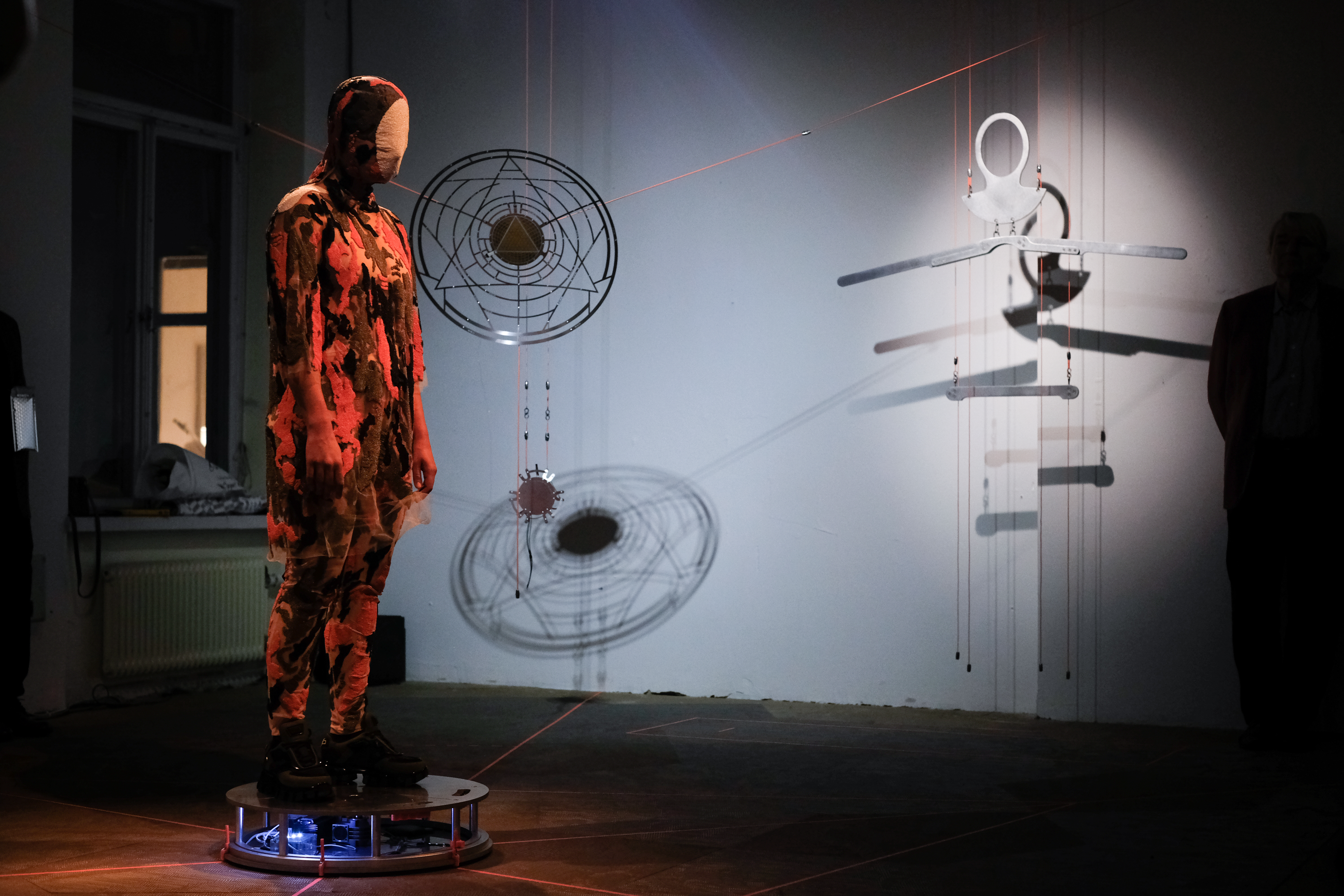
The Paradox Tale of Logic Gate is Farvash’ performance and exhibition within the context of Misschiefs – 10 leading Swedish female artists – exhibition and performances in pre-corona times. The performance comments the situation in Iran and sufferings of the Iranian people, bringing in parts of Iranian culture and history in a surreal and fictional context.
|
Paradox tale of Logic Gate;
Don’t worry babe; It’s the Gate of Logic; faceless is either; AND Citizen of no man lands; OR Techno soldier; XOR As the voice of public; NOR Constructed as I, machine; NAND Imagined Myth; NOR Maybe it’s an arranged belief; XNOR Dear Sepah; Don’t worry babe; Its just Logic |
